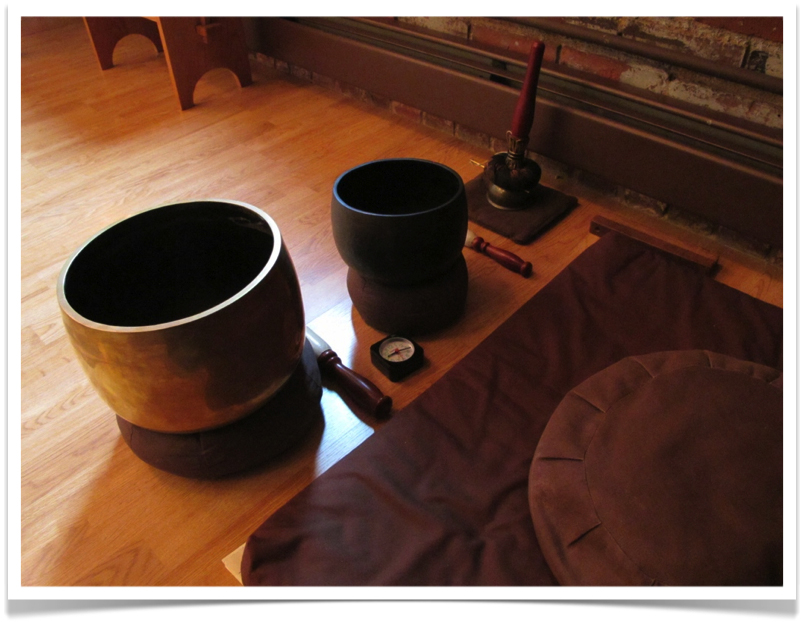Doan Book With Post-Its
 Tuesday, December 9, 2014 at 11:04AM
Tuesday, December 9, 2014 at 11:04AM 
Kyosho Valerie Beer led a Rohatsu zazenkai (one-day retreat) last Sunday at Empty Hand Zen Center. The service was a little different than usual, e.g. we chanted the Maka Hannya Haramita Shingyo (Heart Sutra in Japanese), and there were several bell changes in the doan script. Hence, the Post-Its. Couple of other key items for the person hitting the bells during zazenkai are also visible in the image: 1) a clock, 2) the sitting schedule, and 3) a bell (shokei, or small bell, is shown). [NOTE: Bows to Valerie (thx) for a wonderful eighth-day celebration].



